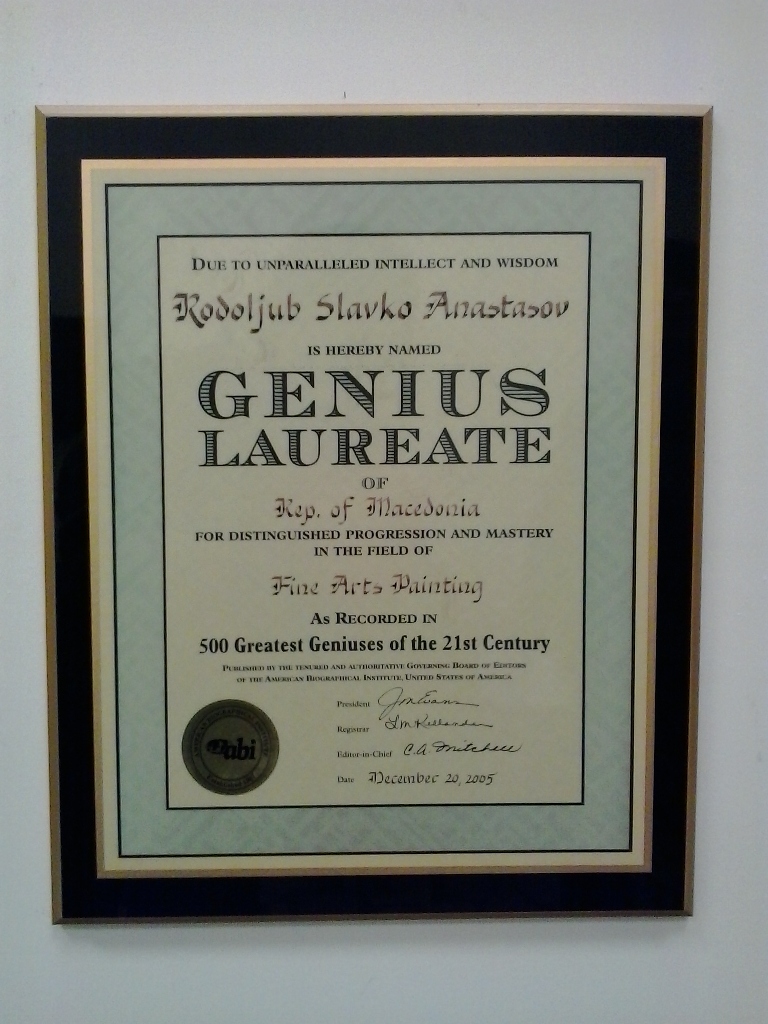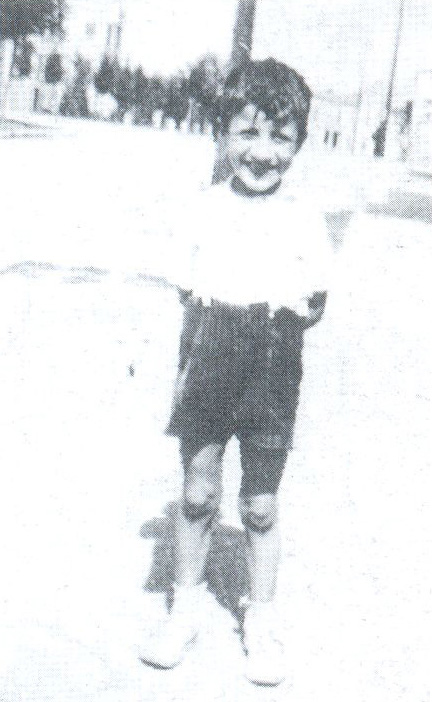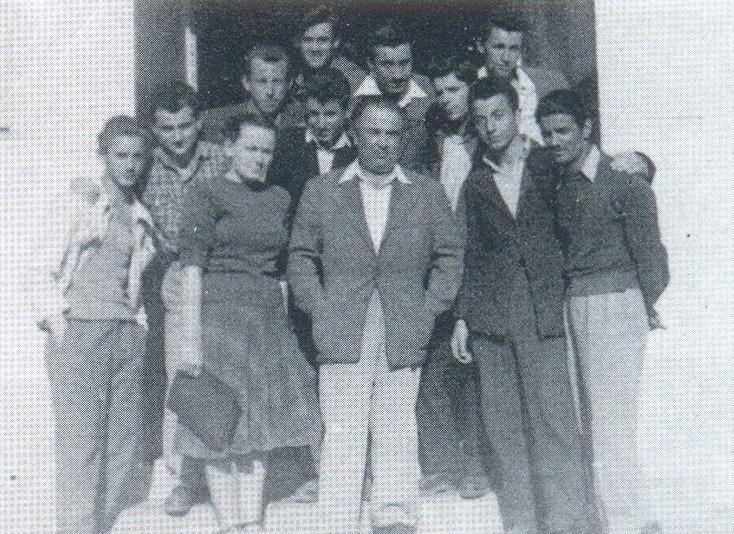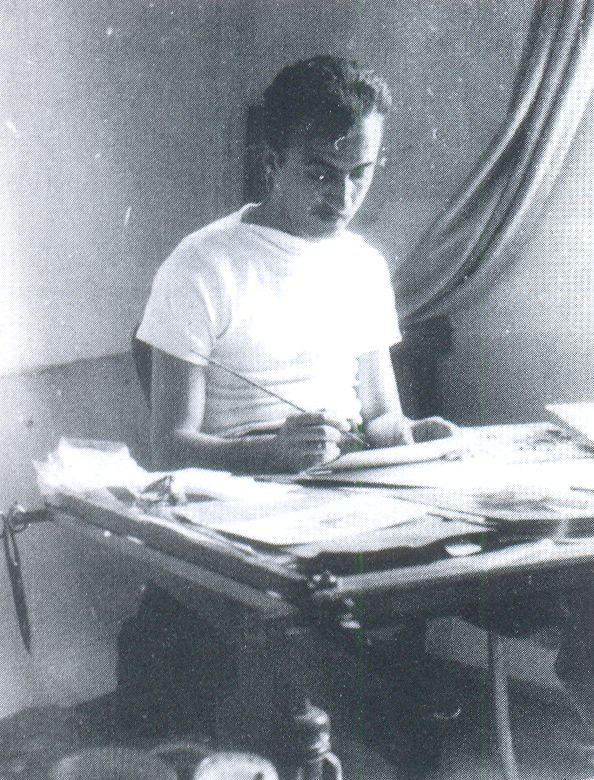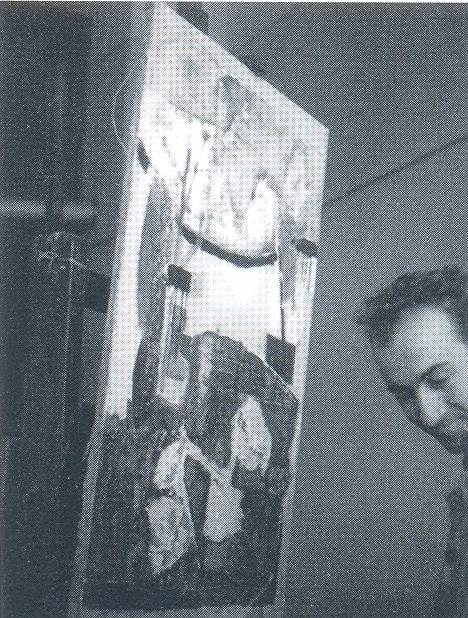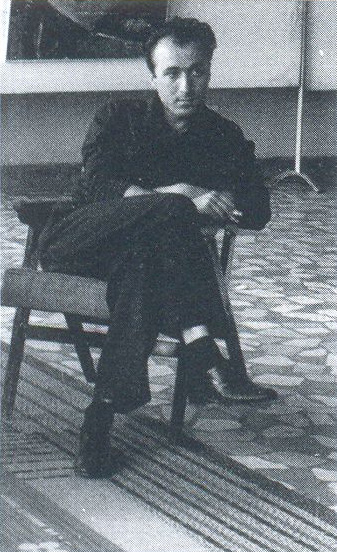Родољуб Анастасов е роден во Скопје, на 25.02.1935, од татко Славко – од скопската фамилија Анастасови – Кучуќ позната трговска фамилија. Дедо му Петре Кучуќ материјално ги помагал активностите на гемиџиите во Солун. Неговото име е документирано во Архивот на Македонија во Скопје. Неговата мајка Ефтимија – Ефка Серафимова потекнува исто од трговска фамилија. Серафимови се преселиле од Тетово во Скопје кога мајката на уметникот наполнила четириесет дена возраст. Татко му посетувал вечерни часови за сликање во Софија. Дарбата за уметникот ја добива од татко си, а чувствителноста од мајка си. Неговите браќа Петар и Димитар исто така покажувале интерес за уметност.
Во окупирано Скопје започнува да посетува основно училиште на бугарски јазик, се до второто одделение кога започнува војната. Од детските денови сведок е на агресијата од страна на бугарската и германската војска. По ослободувањето го продолжува школувањето на македонски мајчин јазик во основното училиште „Гоце Делчев“. Оттука продолжува со школувањето во класична гимназија и завршува полуматура. Учител по цртање му бил Фрчковски, еден од последните прочуени македонски зографи.
Школувањето го продолжува во „Художественото школо“ во Скопје во класата на Лазар Личеноски, додека предметот акт го слуша кај Димитар Пандилов. Анастасов завршува Училиште за применета уметност во Скопје во 1954 година, кое било нарекувано „Мала Академија“.
Во класата на проф. Лазар Личеноски во „Художественото-школо“- Скопје III год
Во тоа време уметникот живее на улица „Илинденска“ бр. 56 дружејќи се со своите колеги како: Малинов, Петров, Василевски, Маневски, Андреевски, Туниќ, Бошњаковски. Својот дом го нарекува свој „Монпарнас 57“ каде поседува одлични услови за работа.
Во 1955 станува вонреден студент на Вишата педагошка школа во Скопје – ликовен отсек каде му предавал Васил Коџоман. Во 197 година се вработува во претпријатието „Декор биро“ во Скопје каде работи како графички дизајнер.
Како-сликарски-дизајнер-во-„Декор-Биро“-Скопје
Од 1958-1962 година студира на Академијата за ликовна уметност во Белград.
На Академија во Белград
Во 1963 е уапсен во Марибор, Словенија за „вербален деликт“. Судот во Загреб го осудува за навреда на маршалот Тито и раководството на комунистичката партија, по што следи 2 годишно лишување од слобода, праќајќи го на Голи Оток. Причината била несогласувањето со ставовите на Јосип Броз Тито за апстракната уметност објавени низ тогашниот печат. На 26 ти јули се случува катастрофалниот земјотрес во Скопје, период во кој Родољуб не ја знае судбината на своето семејство. Во 1965 година му завшршува казната на озогласениот остров.
Уметникот во-салонот на Работничкиот дом
Првата самостојна изложба се сличува во „Работнички дом“ во Скопје во 1966 година, додека во 1967 е веќе повикан да го отслужи воениот рок во Нови Сад. Во 1968 година се жени со Јустина, љубовта на неговиот живот и најголемиот поддржувач на неговата работа. Јустина Коштомај е по потекло од Велење, Словенија, по професија комерцијалист и одличен познавач на повеќе јазици.
Истата година почнува како хонорарен, а продолжува како редовен професор во училиштето за применета уметност „Лазар Личеноски“ во Скопје, отсек текстил, а потоа и отсек сликарство.
Прочитајте повеќе за неговиот лик и дело >>>
* * *
1935
Born in Skopje on 25 February 1935, to father Slavko, from the Skopje family the Anastasov-Kucuk, a well-known family of merchants. His grandfather Petre Kucuk financially supported the actions of the ‘Gemidzii’ (fighters for Macedonian independence) in Thessaloniki. His name is documented in the Archive of Macedonia, in Skopje. His mother Eftimija – or Efka Serafimova originated from a merchant’s family in Tetovo. The family of the artist’s mother moved to Skopje 40 days after her birth. His father took art lessons in Sofia in the evening. The future artist inherited his artistic talent from his father, and his perceptibility from his mother.
1942-1944
He attended a Bulgarian elementary school in the occupied city of Skopje until the second grade, during the war. Thus as a child, the artist witnessed the aggression by the German and Bulgarian armies. The city was bombarded by the Allied British Royal Air Force (RAF).
1945-1946
After the liberation, he continued his education in Macedonian mother tongue, in the third grade of the ‘Goce Delcev’ elementary school. In those postwar years, the most used word was ‘for the first time’. For the first time in history of Macedonia, he could witness when the people got involved in their own, turning adventure, going from the material into the spiritual sphere.
1947-1949
Anastasov continued his education in a classical junior high school, where he graduated. His art teacher was Frckoski, one of the last Macedonian mural painters. At the age of thirteen, the artist, together with his father, visited the great exhibition of Soviet Painting in the National Museum of Skopje. This was his first contact with genuine artifacts, which would leave a long-lasting impression in his mind.
1955-1956
He enrolled as a part-time student at the Skopje Teachers College, at its Art Department. There he was taught by Vangel Kodfoman.
He was deeply impressed by Henry Moore’s exhibition at the Art Gallery of Skopje in 1955, with the opening address by Herbert Read. Read also gave a lecture in Skopje.
1958-1962
In his third attempt, he managed to pass the entrance examination at the Academy of Fine Arts in Belgrade. While visiting Ohrid, he studied medieval mural paintings and compared them to the frescoes in ‘St. Pantelejmon’ church in Skopje.
1963
ULUS (Association of Serbian Artists) organized its annual exhibition (paintings, sculptures, and graphics made by new members). In this year (1963), Rodoljub became new ULUS member. However, in the same year, Rodoljub was arrested in Maribor (Slovenia) by the Yugoslav army. Because of ‘offence of opinion,’ the Court Martial of Zagreb sentenced him to two and a half years of hard labor on the Goli Otok prison island in the Adriatic Sea. This verdict was upheld by the Supreme Military Tribune in Belgrade. According to the artist, the verdict cited charges ‘ … for violating the fraternity and unity of the country … for insulting Marshal Tito and the Communist Party leadership … ‘ The very reasons for this were the reactions expressed by Rodoljub against the positions maintained by Josip Broz concerning abstract art, as published in the Yugoslav press. This was period when the artist was physically removed from society (1963/64/65). On 26 July 1963, early in the morning, Skopje was hit by huge earthquake. This was the time when Rodoljub even did not know the destiny of his family members.
1965
After serving his prison sentence, he embarked ship ‘lzvor,’ the very same ship that took him to the prison island, and traveled to Rijeka. This was followed by his return to Skopje, where he was deeply struck by the figure of his mother, showing the traces of past events.
After the earthquake, the city could not be recognized as such; his Montparnasse 57′ was gone, too; for the artist, it seemed to have lost its physiognomy forever. With his family, he lived in one of the many postearthquake prefabricated shacks in downtown Skopje, i.e. in the one next to the studio of Nestor Aleksiev, the last Macedonian woodcarver belonging to the old school. Under such conditions, he was intensively preparing his first exhibition.
The frequent exhibitions of foreign modern art were, indeed, further stimulation to accept new art tendencies in our country as well. Rodoljub Anastasov was ULUS member in the 1963-1965 period, and member of DLUM (Association of Macedonian Artists) since 1965.
1966
He lodged a request to the Skopje Workers’ Culture Center (Rabotnicki dom) in Skopje, for the organization of his first solo exhibition.
1967
He was called to Novi Sad to complete his army service.
1968
He married Justina Kostomaj of Velenje, Slovenia, a commercial officer fluent in several languages. Her presence in the artist’s life proved crucial, since she was the one supporting him and his work most. Their first holiday destination was Novi Vinodolski, near Goli Otok. This event further strengthened their life-long bond!
The same year, initially Rodoljub Anastasov was hired as part-time and gradually became a full-time professor at the School of Applied Arts ‘Lazar Licenoski’ in Skopje. At first employed in the Textile Department, he was soon transferred to the Art Department.
